🟧 96 Units On Ocean // Balboa Reservoir Project Update
In this week’s newsletter, we dig into plans for 96 units of housing on Ocean Avenue and more.
The story of a 40-foot outcropping that once stood on City College Hill.

This article was first published by San Francisco Story, San Francisco history and tall tales by Woody LaBounty. Sign up today.
Construction work is ongoing at City College of San Francisco’s main campus with a new Student Success Center taking shape near the corner of Ocean Avenue and Frida Kahlo Way.

There were some cold, foggy days when I took gymnastics classes from Ms. Hagiwara at City College of San Francisco. The mist, drawn in off the ocean to flow between Mount Davidson and the Merced Heights ridgeline, would hit its first real obstacle at the knoll on which the campus’s Science Hall stood.
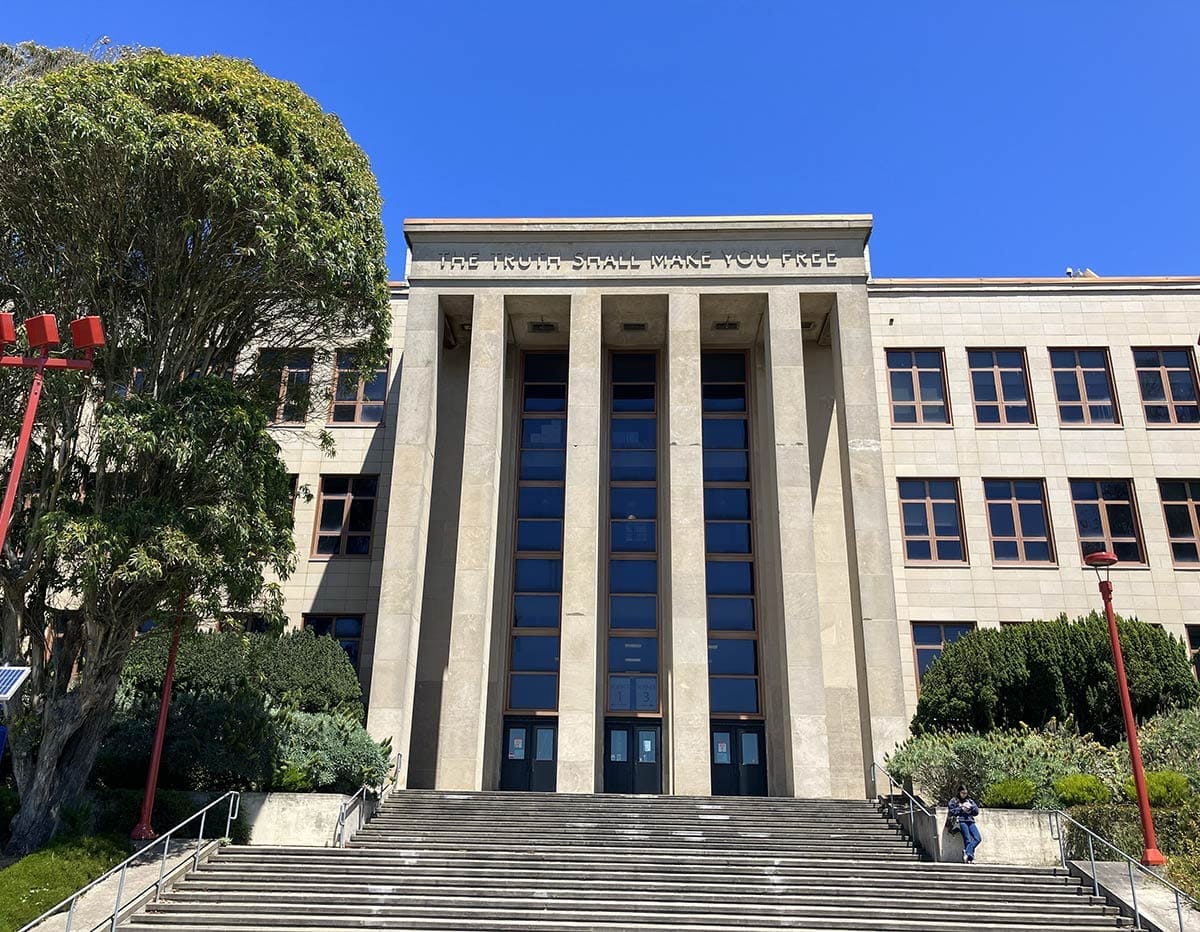
Because whole summer sessions could pass in a cool veil of gray, I thought Cloud Circle a very appropriate name for the main drive around that knoll. And I was somewhat disappointed when I found out the name was not in honor of cumulus formations, but the school’s first president.
Dr. Archibald Jeter Cloud earned a great deal of appreciation for his career as an educator and administrator. He rose from English teacher at Lowell High School to chief deputy superintendent of San Francisco schools and in 1935 was tapped to lead the creation of “San Francisco Junior College.”
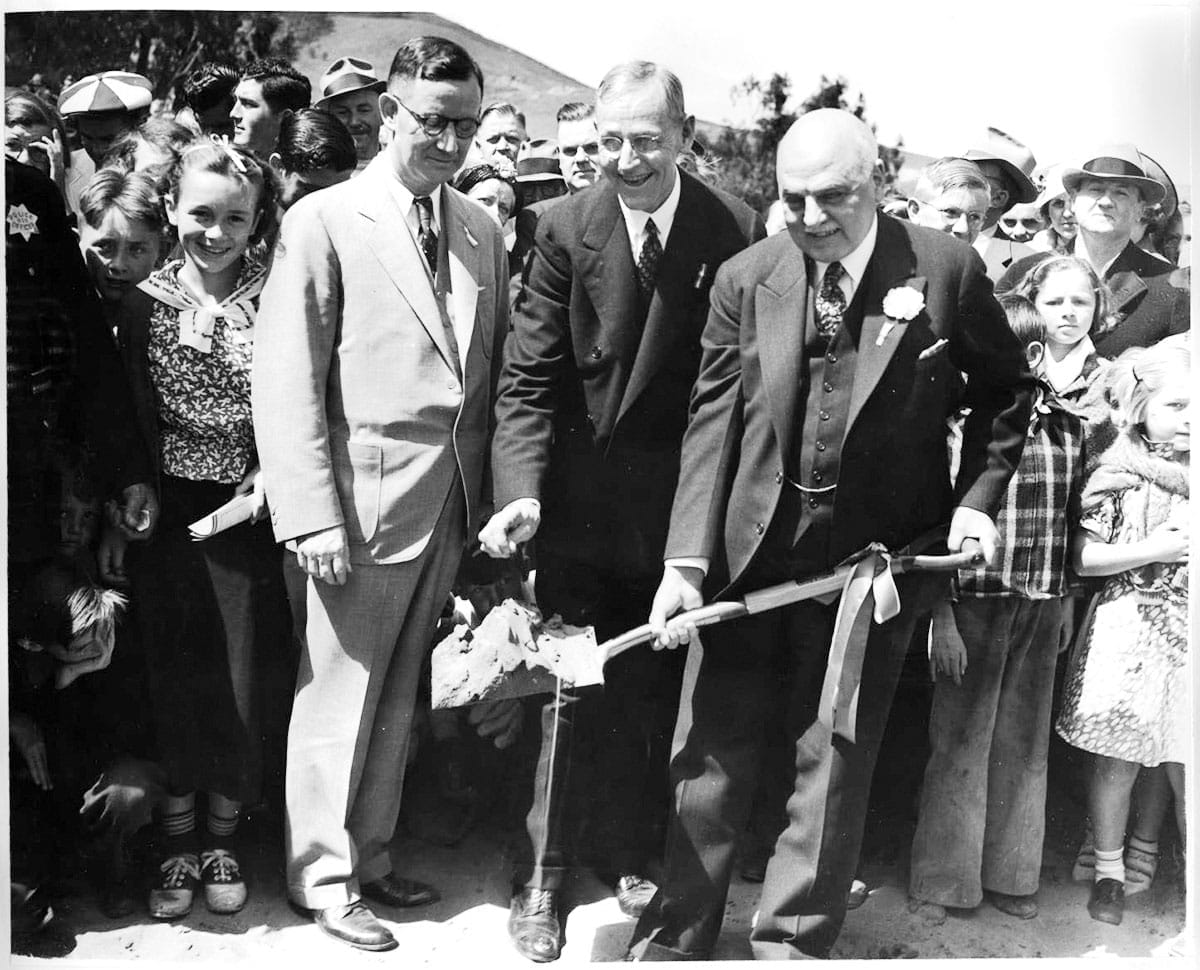
Cloud’s name was synonymous with the school from its establishment until his retirement in 1949. Faculty recruitment, curriculum creation and the construction of the main campus were all under his leadership. In addition to the hill-looping road, City College has Cloud Hall, the old library and classroom building named in his honor. When he passed away in 1957, every San Francisco public school flew its flag at half-mast.
It’s good the road and the hall are still around because the first object on campus named to recognize Dr. A. J. Cloud was quickly obliterated.
When San Francisco Junior College was created in 1935, it was a school without a home. Classes were held in 28 different locations across the city before the school district did a land swap with the recreation department for 37 acres in the western half of Balboa Park.
By early 1937, with land secured, and little plaster-and-putty models of school buildings presented to city officials and the press, a ground-breaking ceremony was planned for April 25, on the grassy eastern slope of the plot.
Mayor Angelo Rossi, Cloud and assorted dignitaries gathered to turn a symbolic spade of dirt to start construction. Before the shoveling, however, two students read speeches of appreciation for Cloud at a granite boulder on the knoll. It was a pretty big rock.
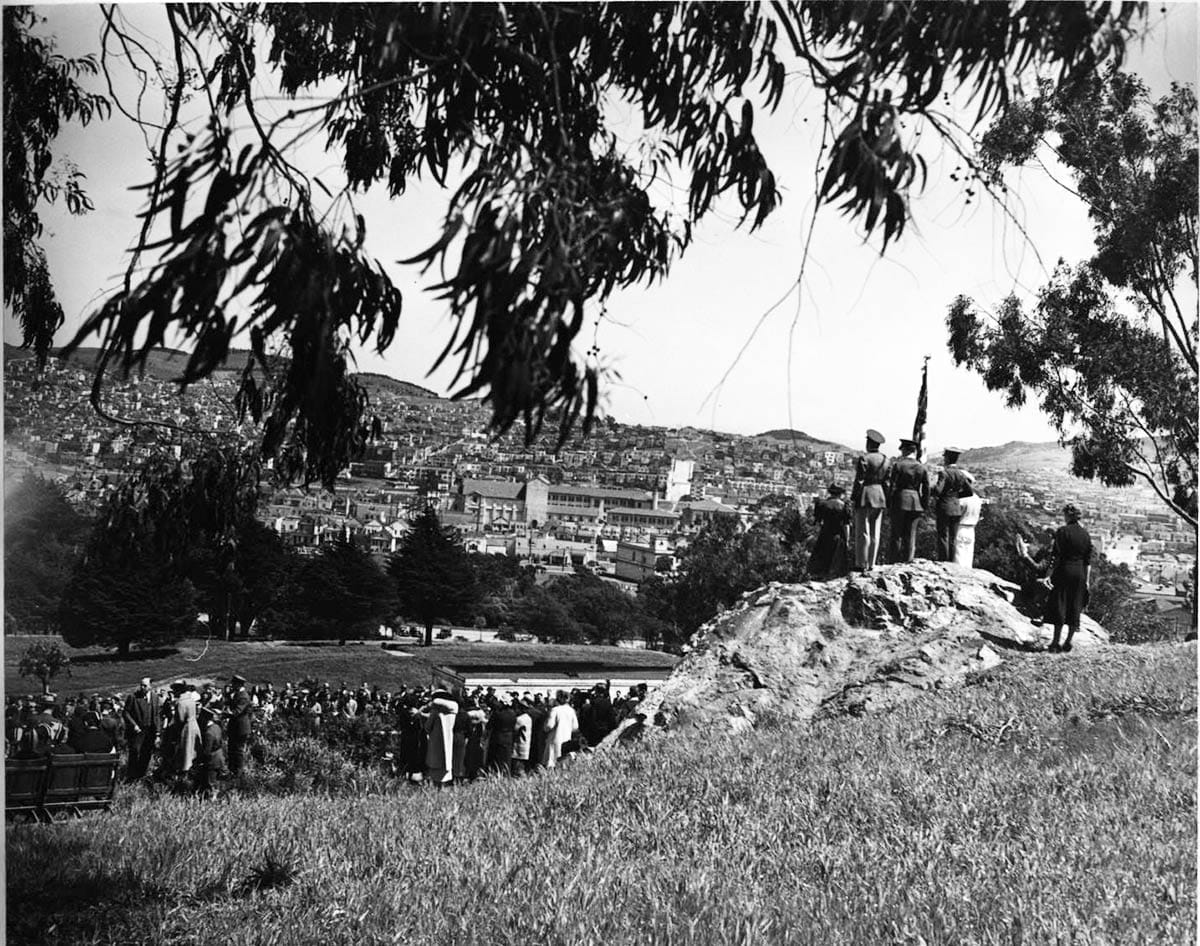
Earlier in the week, a group of students previewed the campus site and tried for some small slice of immortality by writing their names on the prominent rock. Marion Yager went further by gouging in her name with a hammer and chisel.
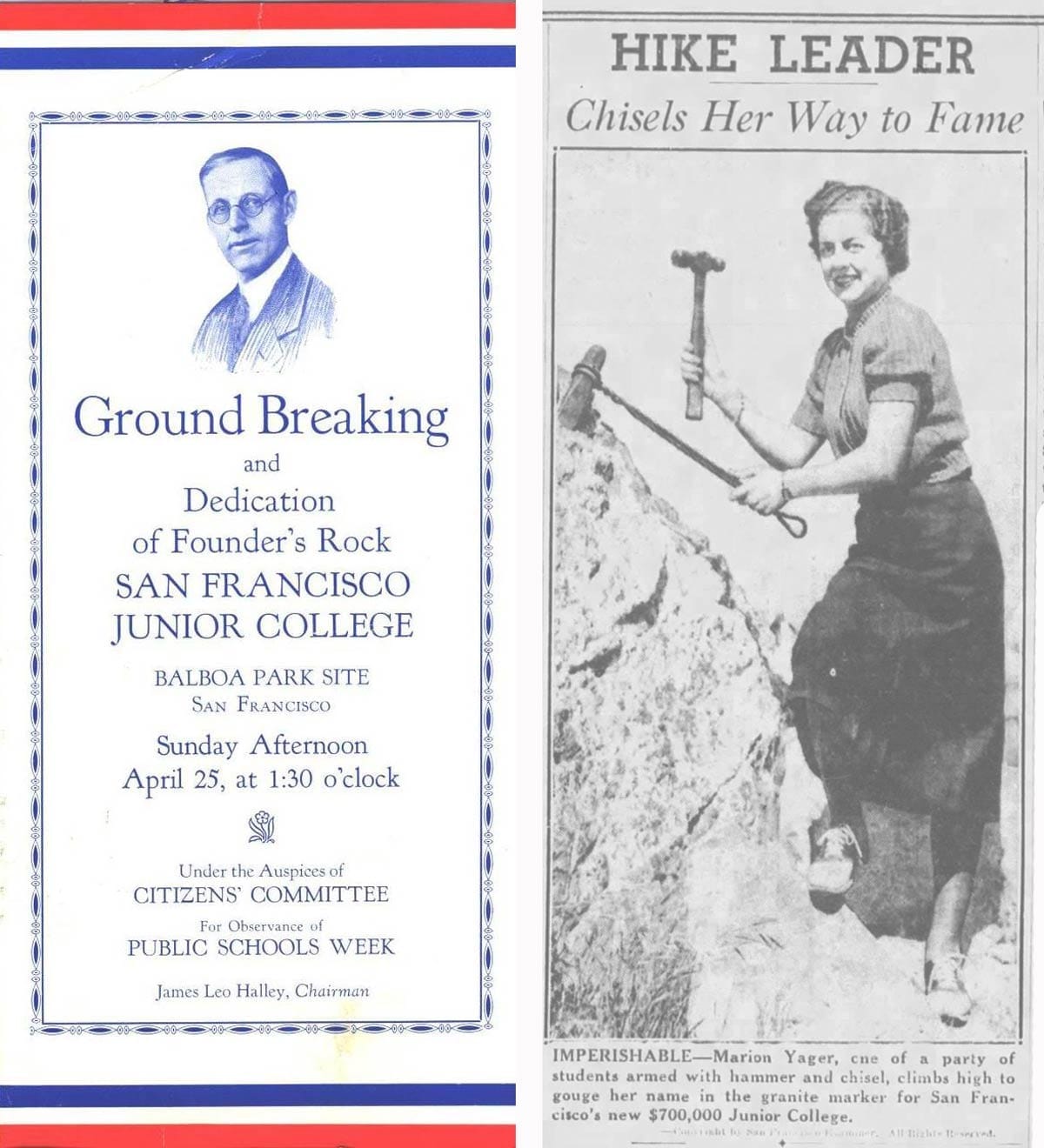
In the day’s ceremonial program, the 40-foot outcropping was named “Founder’s Rock,” likely in imitation of Founders’ Rock at UC Berkeley, where legend (and a plaque) has it as the site of that university’s conception.
But in her address at the ground-breaking, Mimi Colton, secretary of the Associated Students, formally christened the boulder “Cloud Rock” in honor of the college president.
The one big problem with Founder’s Rock/Cloud Rock? It had just been selected as the foundation site for the first campus building.
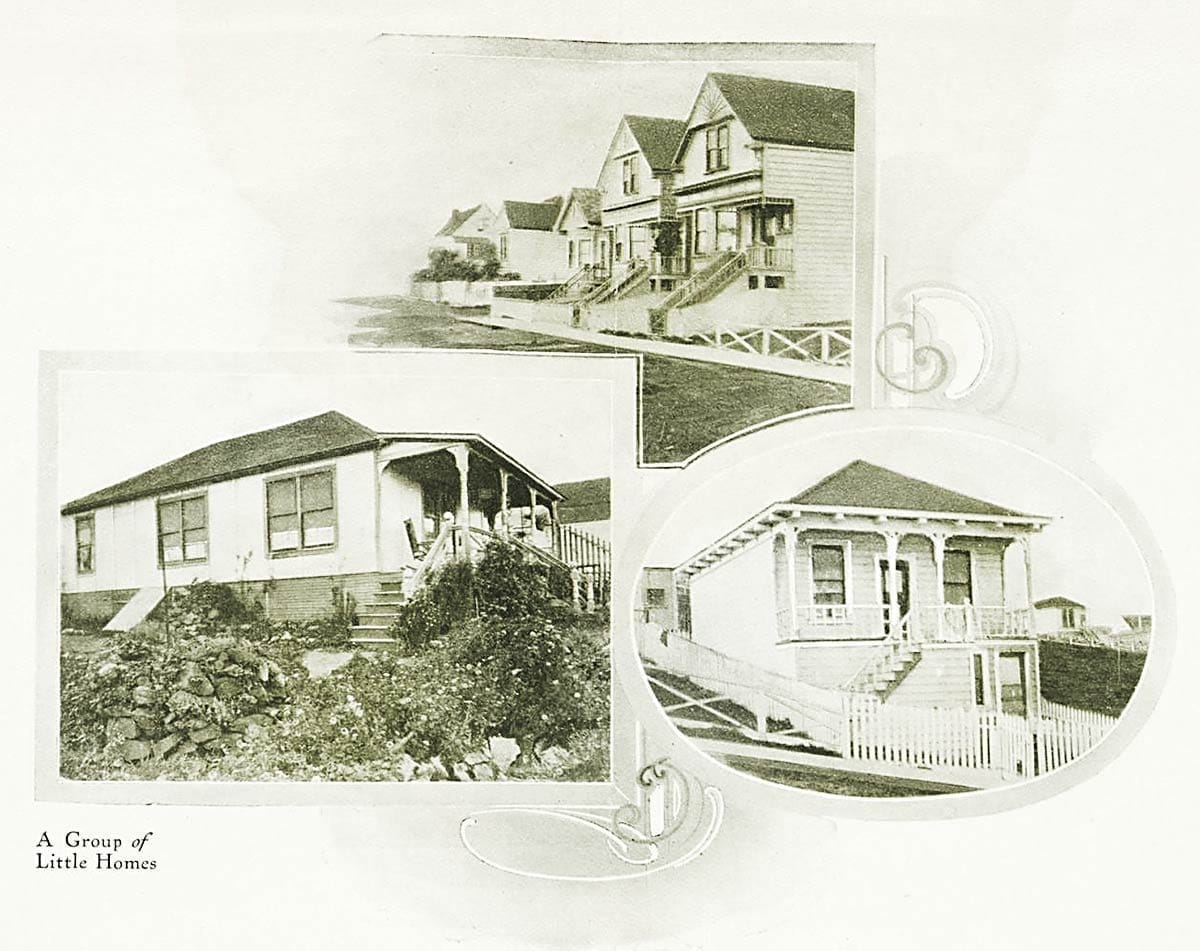
The chairman of the Physical Properties Committee of the Board of Education suggested the idea to architect Timothy Pflueger. The board agreed on April 5, 1937, to erect the first unit at the top of the knoll.
Construction began immediately. The Science Hall, set where Cloud Rock once lay near the campus peak, was formally dedicated and opened on November 10, 1940.
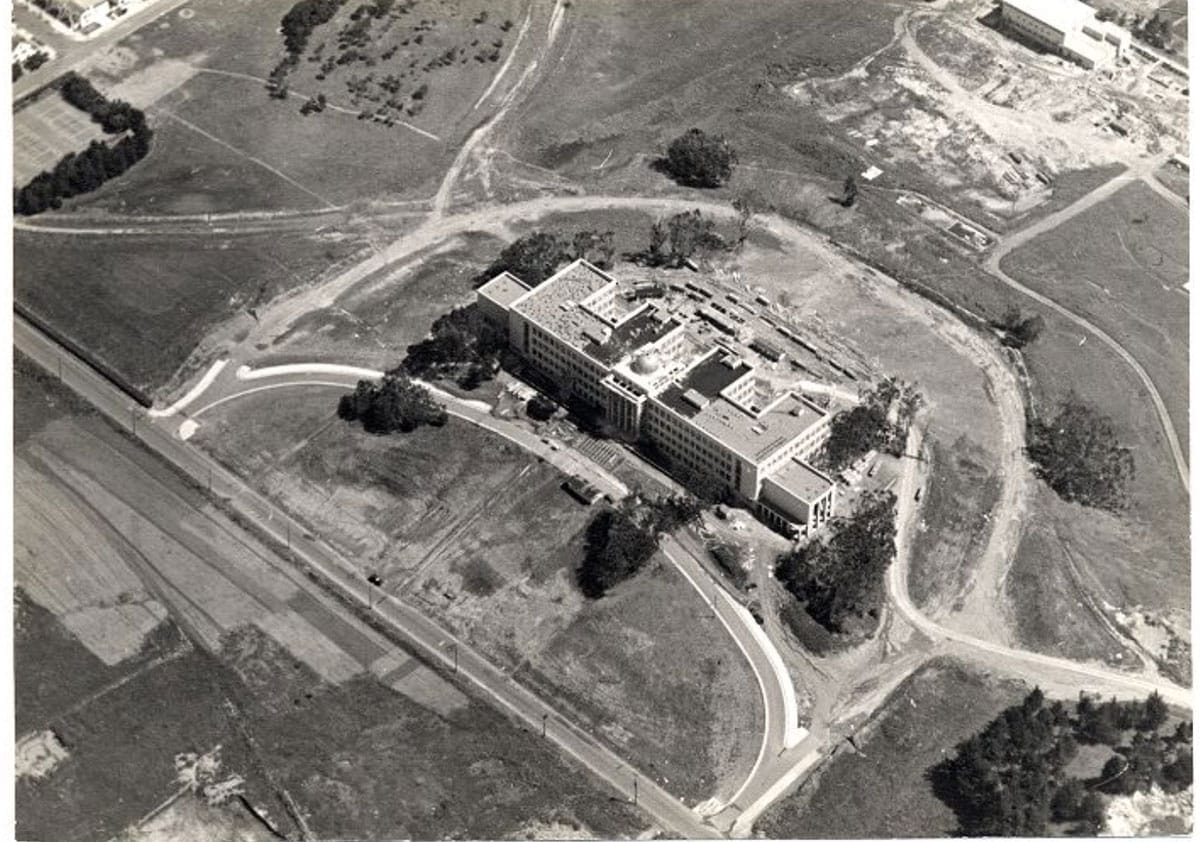
So, while it was a nice gesture, Marion Yager, Mimi Colton, and Dr. Cloud himself must have known in April 1937 that the solid hunk of granite named in the president’s honor had a future as short-lived and ephemeral as, well, a cloud.
Tom Irwin, “Site of New S.F. Junior College From the Air,” San Francisco Chronicle, April 5, 1937, pg. 30.
“S.F. College Model,” San Francisco Examiner, April 6, 1937, pg. 11.
“Land Exchange to Give S.F.J.C. 10 More Acres,” San Francisco Chronicle, April 6, 1937, pg. 15.
“Hike Leader Chisels Her Way to Fame,” San Francisco Examiner, April 23, 1937, pg. 11.
“Model of New Junior College Is Admired,” San Francisco Examiner, April 25, 1937, Section S, page 9.
“Mayor Breaks Ground for S.F. Junior College,” San Francisco Chronicle, April 26, 1937, pg. 7.
“Construction Begun at Junior College Site,” San Francisco Examiner, April 26, 1937, pg. 15.
“Dedication of School Units Opens ‘Week,’” San Francisco Examiner, November 11, 1940, pg. 13.
“Dr. Cloud’s College,” San Francisco Chronicle, April 28, 1954, pg. 18.
“Schools Mark Death of Dr. A. J. Cloud,” San Francisco Chronicle, June 24, 1957, pg. 3.
We deliver neighborhood news, events and more every Thursday.